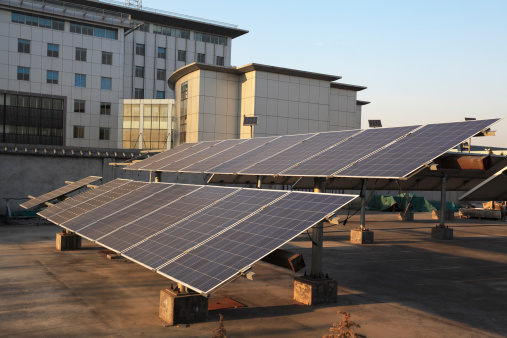
Presidential memo requires agencies to obtain 20% of energy from renewable sources by 2020.
Can federal facilities achieve 20% reliance on renewable energy sources? This question has come to the fore now that President Obama has called for all executive branch agencies to achieve this ambitious target by 2020. To help meet this energy goal and other sustainability targets previously set by the Obama Administration, agencies were encouraged to access to online resource efficiency tools that track energy use, water consumption, and greenhouse gas emissions.
President Obama released his recent renewable energy goal to follow up on Executive Order (E.O.) 13,514, which he issued in late 2009. E.O. 13,514 established a general mandate for sustainability across the federal government. It instructed agencies to “lead by example” in creating a “clean energy economy that will increase [the] Nation’s prosperity, promote energy security, protect the interests of taxpayers, and safeguard the health of [the] environment.” The executive order mandated agencies to divert at least 50% of their waste from landfills by 2015, reduce water consumption by 2% annually through 2020, establish inventories of greenhouse gas emissions at federal facilities, and reduce reliance on petroleum in vehicle fleets by 2% annually. However, the 2009 executive order did not specify any specific level of reliance on renewable energy at existing federal facilities.
The recent presidential memo directs federal agencies to meet stringent new renewable energy targets “to the extent economically feasible and technically practicable.” Agencies have been instructed to source their electric energy from renewable sources on a phased-in timetable requiring 10% reliance on renewable energy by 2015, and 20% reliance on renewables by 2020. Acceptable types of renewable energy are defined in the original 2009 executive order, and include hydroelectric, thermal, wind, tidal, solar, landfill, and biomass energy sources, among others.
The new memo also encourages federal agencies to access two online resource efficiency programs: Energy Star Portfolio Manager (ESPM) and Green Button. ESPM is an online tool created by the Environmental Protection Agency (EPA) to track energy use, water consumption, and greenhouse gas emissions. Companies representing roughly 40% of commercial business space in the United States already use ESPM to help benchmark their progress towards environmental goals. All agency buildings that are already metered for energy and water use will be required to log their monthly performance data into ESPM pursuant to the presidential memo.
Green Button is an industry-led initiative that enables electricity customers of all sizes to download data about their usage habits from local utility providers. Software applications can display the information compiled by Green Button visually to help users understand their options for reducing energy consumption and cutting costs. For example, WegoWise is a start-up company that uses Green Button data to help building owners analyze their energy data using sophisticated online graphs. The General Services Administration (GSA), in coordination with the EPA and the Department of Energy will produce a strategy for piloting Green Button at a broad range of federal facilities by April 2014.
Data collected from both of these new online resource efficiency programs will be incorporated into annual accountability documents known as “strategic sustainability performance plans,” or SSPPs. The SSPPs are intended to help agencies pursue economic, environmental and energy goals, and E.O. 13,514 has required most federal agencies to issue the reports since it took effect in 2009. Agencies’ SSPPs must include internal efficiency targets for all facilities, and must also track annual progress towards long-term benchmarks on water, energy, and waste reduction. Thirty-eight federal agencies currently produce annual SSPPs.
SSPPs are required to prioritize actions that produce a positive return for American taxpayers. For example, the EPA recently updated its 2013 SSPP, and announced its intent to consolidate two laboratories in North Carolina in 2014 to save on rent costs and reduce greenhouse gas emissions. The EPA anticipates the move will cut energy use and save taxpayer money without affecting research capacity.
With his latest memo, President Obama has affirmed his administration’s commitment to expanding renewable energy use, as well as economic and environmental efficiency in the federal government. The White House itself installed solar panels on its roof in 2013. In the coming years, federal buildings throughout the country may well follow.



